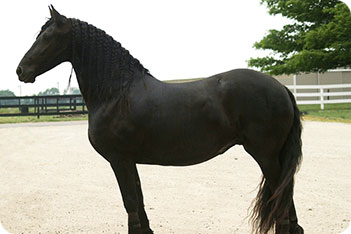

Bitless Bits And Bridles
Bitless bridles and bits are widely used not only for training or re-training of horses but also for horses who prefer not to have a conventional bit in their mouths for sensitivity reasons or rider preference.
Bitless bits and bitless bridles still need to be used by experienced and understanding riders, but when used correctly the rider should be able to use minimal pressure to gain the desired response.
Bits such as the English and German Hackamore should only be used by well informed riders due to the length of shank, nose and poll pressure, which, especially the German version, require a very light touch from the riders point of view and therefore should not be used by inexperienced hands.
Types Of Bitless Bits
This includes the German and English Hackamore which both exert pressure on the bridge of the horses nose and the poll:
- English Hackamore
The English Hackamore consists of a stainless steel shank of moderate length, which the reins are attached to at the bottom. The noseband is attached directly to the shank and applies pressure to the front of the horses nose and poll when the reins are used. There is also a chin strap going under the jaw which acts to hold the shanks in place.
The noseband part of the English Hackamore should sit slightly lower on the horses face then a cavesson noseband would taking care that it is not so low that it interferes with the horses breathing or sensitive nasal structures.
Horses with very sensitive noses may benefit from having the noseband padded out which will help soften the nose pressure. - German Hackamore
The German Hackamore has longer shanks than the English Hackamore giving it far more leverage on the poll and nose when the reins are used. The noseband comprises of a metal chain covered in tough rubber which produces a serious amount of nose pressure when the reins are used. The nose band chain continues under the horses jaw but is usually not covered in rubber.
The German Hackamore is a bit for experienced riders due to its very strong action which comes into play very easily.
Bitless Bridles And Halters
There are several variations to the bitless bridle or training halters which each exert pressure around the horses head depending on the type. When the rope or rein is used the horse essentially yields away from the pressure applied which can be around the side of the face, poll or across the bridge of their nose. Bitless bridles include the bosal, sidepull bridle, rope halters and bitless bridle:
- Bosal
The bosal consists of a noseband that varies in size, with thick nosebands for horses who are just beginning their training to thinner nosebands for horses ready to progress into a a bit or hackamore. At the base of the noseband sitting below the horses jaw there is a knot called the heel knot and it is from this that the rope rein is attached for communication. When the rope is used pressure is applied to the horses nose and side of face causing them to turn their heads away from the pressure. - Bitless Bridle
There are a couple of bitlesss bridles around at the moment such as the Dr Cook and Scawbrig, which look very similar in appearance to an English bridle; the bridle consists of a headpiece which stretches down the face and attaches directly to the noseband, there is a browband and two throatlash's that drop down from each side of headpiece crossing under the horses jaw looping through two rings at each side of the noseband and then continue on tho another end ring to which the reins are subsequently attached.
Instead of the bit the reins pass through rings positioned at either side of the front of the noseband and when one rein is used pressure is applied to the opposite side of the face in a similar way that a sidepull works. When both reins are used together pressure to the front of the nose is applied as well as some to the poll area as well. - Side Pull
Side pull is the term used to describe the action that the halter has upon the horse. The side pull works by applying pressure to the horses face when the rein is pulled causing the horse to soften into the chosen direction.- Rope Halter
The rope halter is a good example of a side pull and is often used with young horses. The rope halters often contain several knots positioned at either side of the nose and upper part of the jaw. When the rein slack is taken up pressure is applied to those areas causing the horse to soften and bend in the direction of the rein pull. - Sidepull Bridle
Sidepull Bridle looks similar in design to an ordinary bridle or headcollar and has rings on either side of the noseband for rein attached, when rein pressure is applied the bridle applies to the face on the opposite side essentially pushing the horse towards the bend.
- Rope Halter